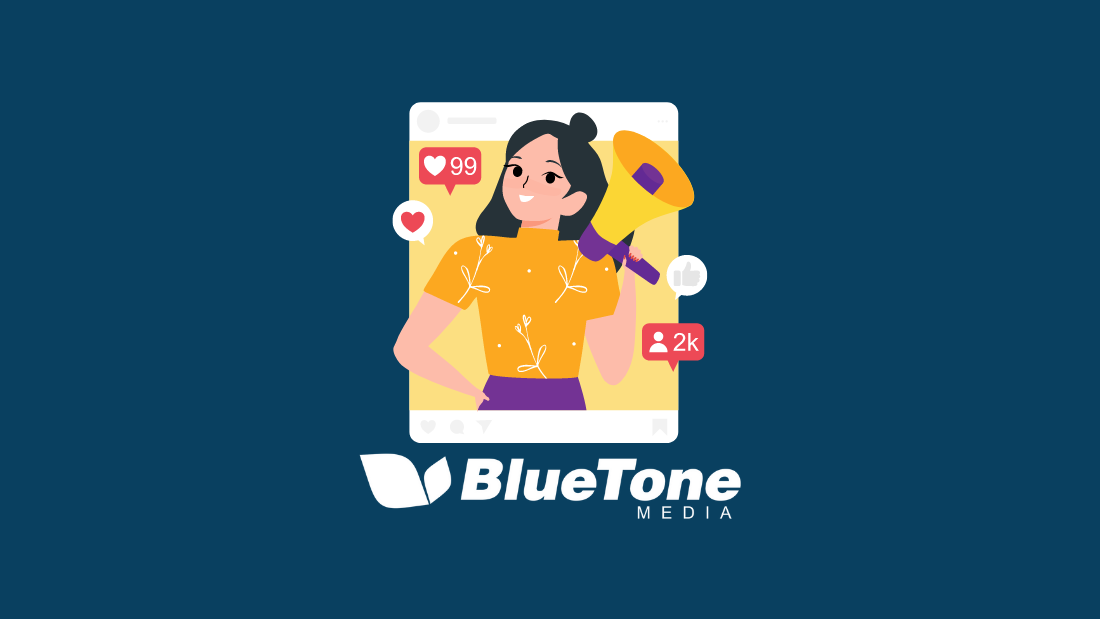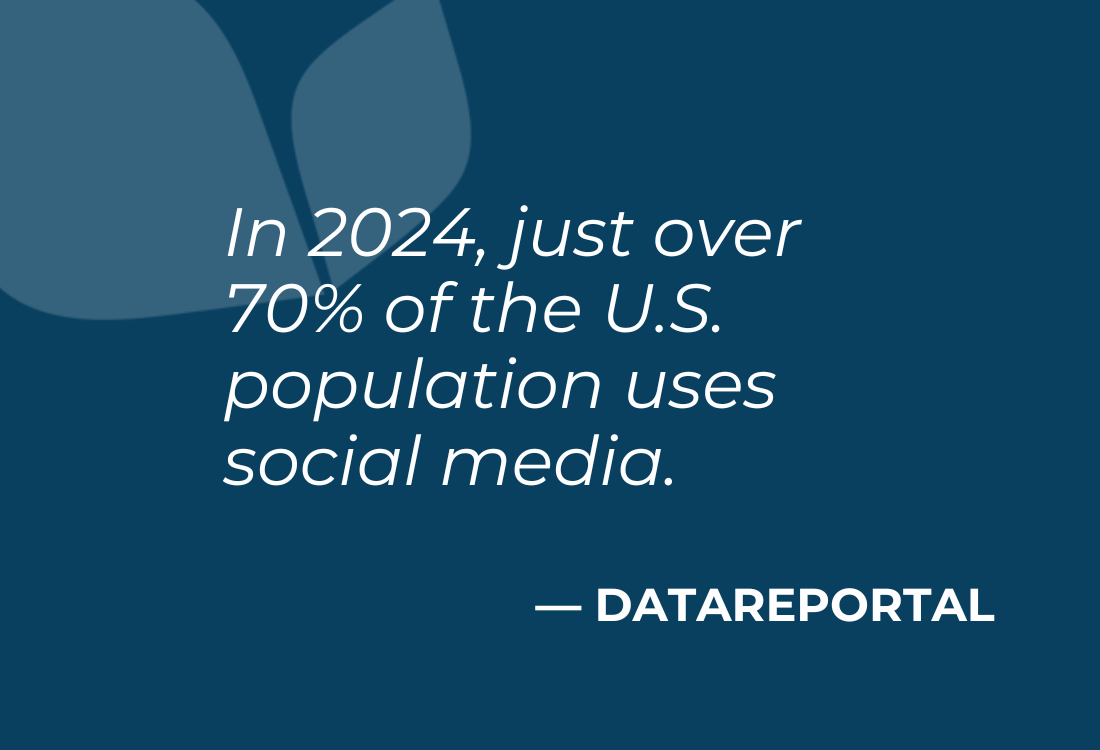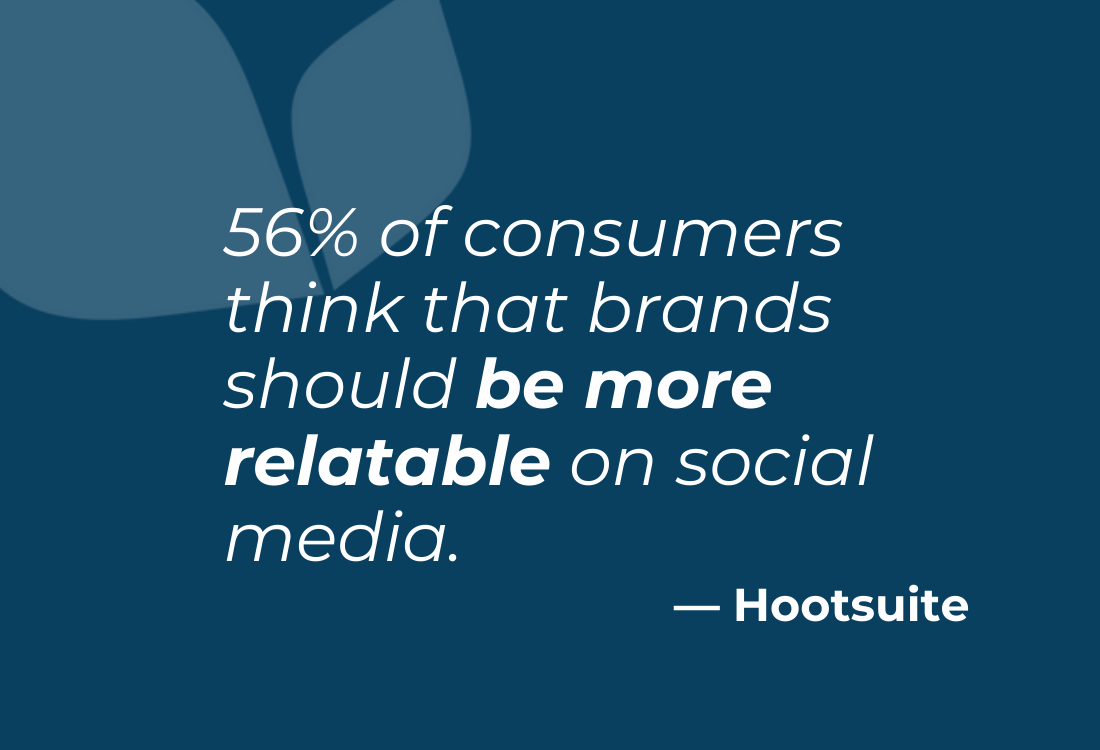Grow Your Social Media Following Organically in 2024 (On A Budget)

Most small businesses don’t have a fortune to spend on social media marketing. You may have no choice but to attempt to grow a social following organically, without the help of ads or boosted posts.
As you’ve probably already seen, increasing social media followers organically is near impossible for many businesses – or it at least feels that way!
So, what are you to do?
Should you just give up on social media marketing and focus your attention elsewhere?
No! Social media remains one of the most rewarding opportunities for small businesses, as consumers increasingly turn to social media to connect with brands and shop for products.

Instead, you’ve just got to adjust your social media strategy so you’re not just wasting your time and money on posts that will never actually reach your intended audience.
Follow the actionable steps below to make the most of your small social media budget and multiply your social media followers 100% organically!
How To Maximize Your Follower Growth as a Small Business
1. Spend time observing your target audience.
Before you do anything else, make sure you have a rock-solid understanding of your ideal customer – their demographics, interests, pain points, and online habits.
Then, figure out which social media platforms they use the most and watch HOW they use them.
For entertainment? Helpful tips and advice? To feel a part of a larger community?
2. Mimic similar brands until you develop your own voice.
As you’re doing target audience research, find other businesses of similar size in your industry and see what’s working for them.
There’s no need to reinvent the wheel!
Adapt these strategies to your unique brand, audience, and goals. Remember, imitation is not the goal; use it as a springboard for developing your own voice.
3. Strive for originality.
You don’t want to rely on the creativity of other brands for TOO long.
Try to think of ways to differentiate yourself. Focus on what makes your business or product unique. Share daring opinions and realize that not EVERYONE will be a match for your business – and that’s okay!
Don’t forget to showcase the most one-of-a-kind component of your business: the people (both customers and staff).
4. Be more “real.”
Want to stand out to online consumers? The best thing you can do is post content that is authentically YOU.
Videos, reels, and stories are a good way to do this.
Become a familiar face, sharing useful tips, insights, and opinions relevant to your business and audience. Use reels to give viewers a glimpse of your production process. Get your staff and happy customers on camera, too.
And don’t be afraid to have a little fun!
Ideally, you should stay away from overly produced content. Focus on providing useful or entertaining content first. Then, subtly start promoting your services and products in a way that feels natural, like you genuinely care about the well-being of the customer.
In other words, be human.

5. Tailor your content to each platform.
What works on Instagram or TikTok might not resonate on LinkedIn or Facebook. It may be easier to post the same caption and visual for all platforms at once, but this method won’t get you the results you’re looking for.
Instead, adapt your content for each platform's unique audience.
Chart: Ideal Type of Content Per Social Media Platform
| Platform | Most Effective Content | Examples |
|---|---|---|
| TikTok & Instagram Reels | Short-form videos (15-16 seconds) | Creative challenges, trends, behind-the-scenes glimpses, product demonstrations |
| YouTube | Long-form videos (any length) | Tutorials, reviews, interviews, vlogs, documentaries |
| High-quality photos, Stories, Reels | Lifestyle content, product shots, quotes, user-generated content | |
| Inspirattion, infographics, step-by-step guides, GIFs | DIY projects, recipes, travel inspiration, product inspiration | |
| Twitter/X | News & blog posts, GIFs & memes, short threads | Breaking news updates, commentary, humorous content, live Tweets |
| Professional content, company news, long-form articles | Industry insights, thought leadership pieces, job postings, event announcements | |
| Short videos (under 2 minutes), blog posts, curated content | Live videos, community discussions, inspirational quotes, funny content |
NOTE: This chart is a generalized cross-industry overview. The most effective content can vary depending on your specific goals and audience.
6. Use a variety of content formats.
In 2024, you’ve got to include video content as a part of your social media strategy – that’s where you’ll attract the most attention initially.
But, depending on your industry, audience, and platform, other content formats (i.e. images, carousels, polls, etc.) can be effective. Again, take a look at what other businesses in your field are doing and replicate it with your own unique twist.
7. Think about timing.
Not all times of day (or days of the week) are created equal. Experiment with different posting times to see what resonates best with your audience. Consider factors like your industry, target audience habits, and platform usage patterns.
If you’re just getting started on social media, start with our suggested time slots below.
Chart: Best Times to Post on Social Media in 2024 (EST)
| Platform | Ideal Posting Times |
|---|---|
| TikTok | 1-4 pm (W, TH, F) and 12-1 pm (weekends) |
| YouTube | 6-9 am, 12-2 pm, 5-6 pm (weekdays) and 9 am - 2 pm (weekends) |
| 9 am - 3 pm (weekdays) | |
| 2-4 pm (weekdays) and 8-11 pm (weekends) | |
| Twitter/X | 1-3 pm (M, W) and 10 am (T, TH, F) |
| Before 8 am and after 5 pm (weekdays) | |
| 8-11 pm (Sat) |
Make sure you post regularly (at least a few times a week) to keep your business top of mind for potential customers.
8. Be active in the community.
Draw more attention to your business by interacting with other local businesses on a variety of platforms, especially in industries related to yours. Share customer testimonials and client highlights (and remember to tag them). Feature the success stories of your clients and any other businesses you work with.
Below are a few examples of powerful community engagement:
- A wedding venue posting real wedding highlights, tagging the featured couples and vendors.
- A home builder sharing project snapshots or featuring dedicated suppliers.
- A restaurant offering exclusive promotions, contests, or giveaways for social media followers.
9. Get your staff involved.
Looking for a quick way to reach more people on social media?
Convince staff to follow, like, and share your posts with their personal or professional networks. This low-hanging fruit will help you build initial momentum to energize your social media efforts.
Offer an incentive to encourage your team to engage with your social media accounts. This can be anything from contests and leaderboards to public shoutouts and employee spotlights.
In a digital landscape where social media (particularly LinkedIn) can be a powerful tool for career development, you could even try offering social media training. That way, you equip employees with the skills and confidence to engage effectively with company and industry content – and even produce their own.
10. Stay on top of comments & messages.
If someone reaches out (positively or negatively), respond promptly and professionally.
Neglecting public feedback not only makes you look bad to users viewing your page, but social media algorithms will take note and make it even harder for your content to reach your target audience.
11. Search for the most relevant hashtags.
Are hashtags still relevant in 2024? The short answer – yes!
Hashtags remain one of the best ways to help your target market discover your business. But, to get the most engagement, you might need to adjust your hashtag strategy.
According to a Social Baker study done by Social Baker, showed that posts with 10+ hashtags reduced engagement by 68.2%.
For most platforms, between 3 and 5 hashtags is the sweet spot. You want them to be specific but also common enough that users will actually search for them. Make sure you do plenty of research to determine the best hashtags for your industry.
12. Track results & adapt.
Social media marketing is an experiment. Don’t be afraid to test out different kinds of content, posting schedules, and hashtags.
Analyze your social media performance through platform analytics. Identify what works and what doesn't and adapt your strategy accordingly. And, of course, make sure you stay up-to-date on ever-evolving platform features and algorithms.
Last But Not Least…Know Your Limits
When it comes to growing your social media followers, there really isn’t a shortcut…unless you want to pay the big bucks with paid social ads. And even if you DO use ads, executing social media advertising effectively is a whole different ball game.
If you’re short on time, carelessly throwing social posts together is NOT the answer.
Instead, recruit some help from experienced professionals so you can focus on other components of your business. You can’t do EVERYTHING. It may not make sense to bring someone in full-time just to tackle your social media needs – that’s where an agency can help!
Fortunately, our seasoned professionals know what it takes to establish a following (in industries ranging from consulting to construction). Hop on a call with our team for a FREE social media marketing consultation.
READ MORE:
- Boosted Posts vs. Facebook Ads: How To Use Them in 2024
- The Top 5 Social Media Best Practices in 2024
- Paid Search vs. Paid Social: Which To Pick For Your Small Business
- What is Content Marketing? – And How To Do It Effectively
- Best Social Media Metrics For Businesses To Track
- 10 Lead Generation Tactics That Actually Work in 2024

